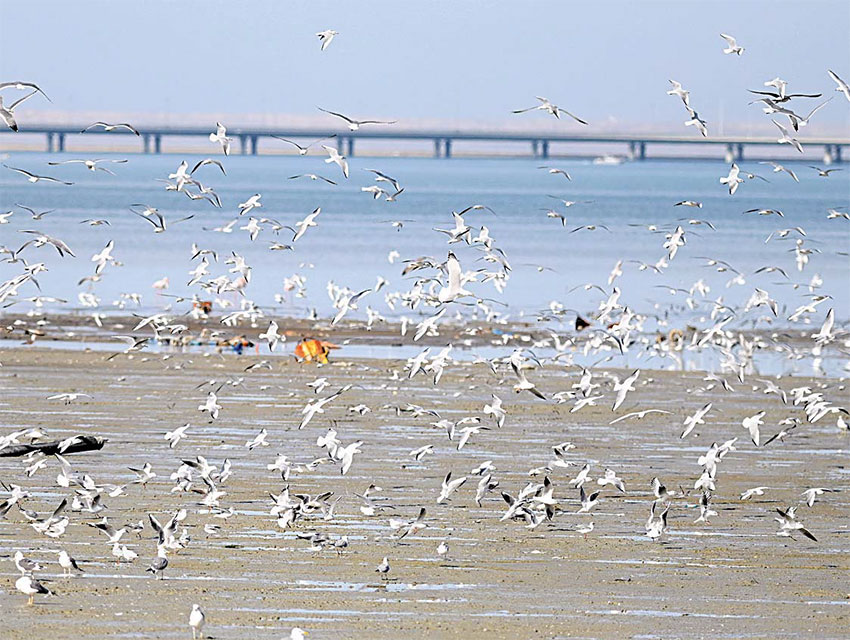15/01/2022
15/01/2022
KUWAIT CITY, Jan 15, (KUNA): The Kuwait Society for the Protection of the Environment announced that it spotted on Saturday thousands of birds along the coast of Sulaibikhat on the occasion of the annual celebration of International Bird Counting Day, with the participation of bird spotters, photography enthusiasts, environmental experts, representatives of government agencies, civil organizations and voluntary teams. The association’s president, Dr. Wejdan Al-Oqab, said in a press statement that organizing such activities comes as a contribution from the association in international environmental activities aimed at supporting the environmental march, strengthening its societal roles and consolidating environmental awareness of the importance of preserving the country’s wealth of migratory or endemic birds.

Explained
Dr. Al-Oqab explained that thousands of birds were detected, including flamingo, great cormorant, gray heron, shahrman, green duck, crab plover, black-headed gull, minute-beaked gull, grouse, Afghan babbler, Indian plover and ordinary rugged ones. She added that the diversity of participants from government agencies, civil organizations, volunteer teams and groups, in addition to large numbers of young people, youth and families reflects and enhances interest in the environmental dimension in Kuwait, and that field activities attract participants of different ages and groups, which is what the association seeks to achieve through many polarized programs and activities for different age groups. It called on everyone to preserve migratory and endemic birds, protect their natural habitats, and avoid poaching, especially since Kuwait is one of the most important and prominent paths of birds in their annual migrations from north to south and vice versa. She pointed to the need to preserve the mudflats and tidal areas, as these areas represent habitats for many waterfowl and waders, considering them important areas for many components of marine life, such as crustaceans, mud hoppers and shellfish, which are an integral part of the ecosystem.

Monitoring
For his part, the head of the bird monitoring and protection team in the association, Muhammad Shah, confirmed that the date of bird counting varies from one country to another, according to what may affect the possibility of their stable presence and thus the possibility of monitoring and counting them, pointing out that the best period for bird counting in Kuwait is during the month of January to mid February is a suitable period for the winter count, when there is no or less bird migration.
On the counting methods and mechanisms followed, Shah explained that they are distributed between a moving and counting monitoring station, and in spaces and occasional observations, indicating that thousands of birds have been documented today, including the great flamingo, gray heron, Abu al-Khasif, Alexandrian plover, Hankour and Luha. He stated that the counting operations witnessed the monitoring of many types of winter birds that remain in the country throughout January during their annual journey from north to south, before resuming their journey during the month of February, returning from south to north for breeding.


